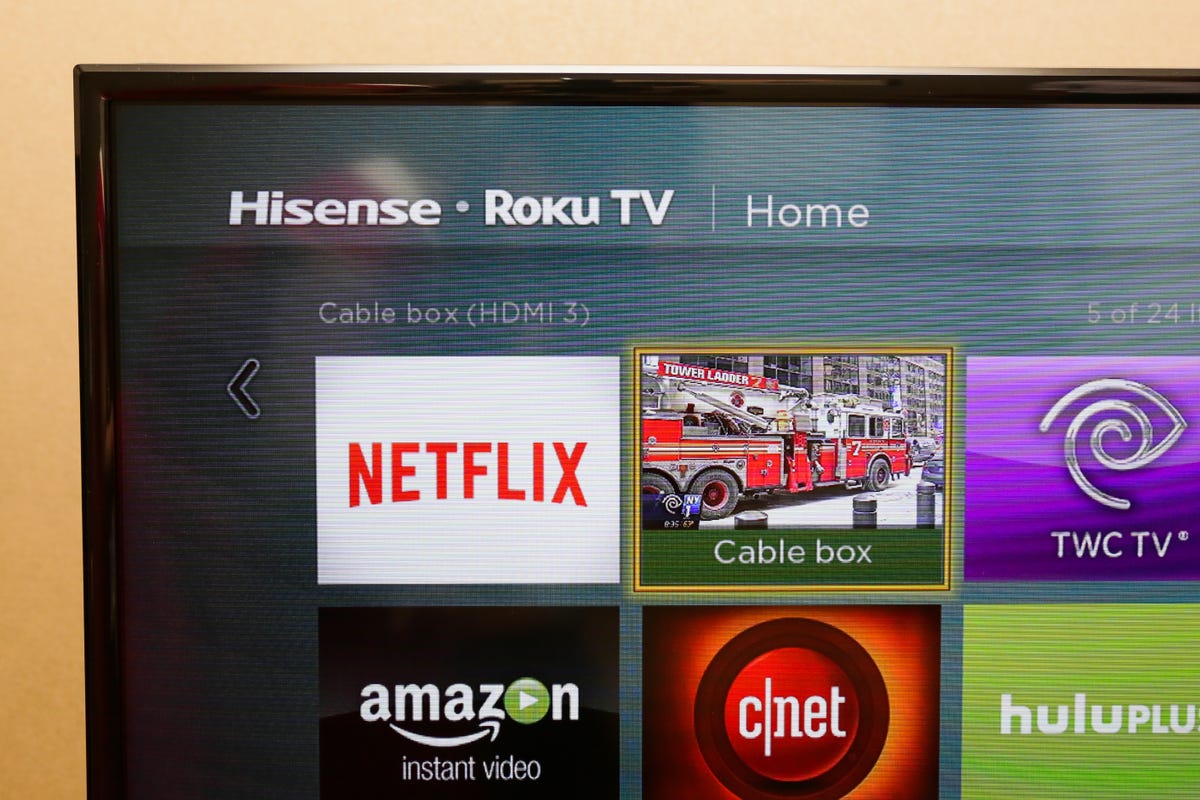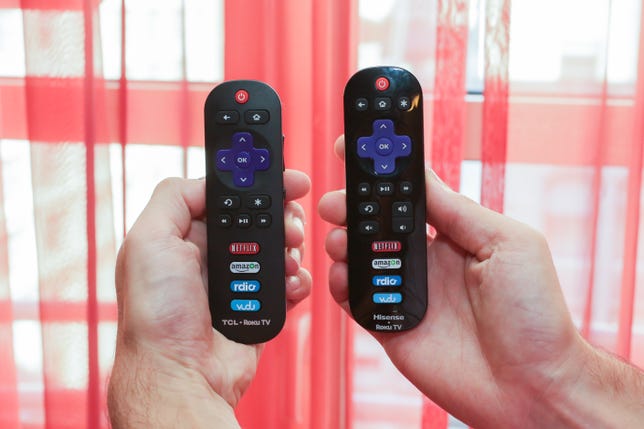
Sarah Tew/CNET
Smart TVs have long been exiled to the outcast table, but Roku televisions may be arriving at just the right time and the right price — cheap — to move connected televisions into the mainstream.
Roku is integrating its popular TV streaming-box capabilities for the first time into television sets from TCL and Hisense, big Chinese manufacturers that are making their largest concerted pushes into the US with the Roku lines. Originally announced in January at the Consumer Electronics Show, Roku sets from TCL are now available for preorder from Amazon and to be sold by major retailers in the coming weeks, with the Hisense TVs set to hit stores late next month, the companies said Monday.
Most importantly, they’re priced to move. A 32-inch set from TCL, for example, costs $229.
Related links:
- Roku TVs marry cheap prices, proven smarts (hands-on)
- Roku TVs by Hisense and TCL (pictures)
- Roku TV unveiled: Television sets with Roku streaming built-in
- CEO: Roku’s future is TV’s future (Q&A)
An affordable price tag and Roku functionality may finally get consumers excited about smart TVs. While the segment is growing, about two-thirds of North American TVs shipped are still “dumb,” according to researcher NPD. And many smart TV purchases end up with the connectivity feature hardly used, if ever.
“Part of the reason why adoption of smart TVs has been so bad, for the most part, is they have been terrible,” said Paul Gagnon, director of global TV research for NPD Display Search, rattling off a list of typical flaws: overly complicated, poor user interfaces, proprietary protections that mean every system is different from the next and few are updated frequently. But as more video moves online and more people want streaming video on the biggest screen, online connectivity in a television is increasing as a consideration for buyers.
If a simple, affordable smart TV becomes a household usage standard, it would change not only how people watch TV but also how programmers make TV available. Knowing the masses are set and able to watch online programming, more TV networks could make more content available in more ways — NBC and ESPN already took this leap by putting tons of extra content online for the Olympics and World Cup, respectively, only to see their ratings soar. Viewers also have a better shot at their TV working seamlessly with the other ways they want to watch — want to head upstairs to watch the rest of the show in bed on a tablet? TVs running off the same Internet system can do it more easily than ever. And cord cutters, start rejoicing: this may be the line of TVs that are built for you.
“Roku TV is…made for the way people use TV today,” said Anthony Wood, founder and CEO of Roku.
Premium price no more
The No. 1 smart TV brand in the US is Vizio, though not because it rules market share generally — that’s Samsung’s turf. It’s the lack of any price premium for the feature. “Vizio is charging almost no money for it,” said NPD’s Gagnon. “It’s a good example of what consumers want.”


Sarah Tew/CNET
Roku TVs from TCL range from $229 for a 32-inch screen to $649 for 55-inch screens, with all four sizes between those two extremes priced at a discount to Vizio. Hisense is letting retailers set the price of its sets, but they will be priced at an “extreme value” below regular smart TVs and and less than other feature televisions with the cost of an external Roku box, according to Chris Porter, the company’s US director of product management.
Competitively, Roku isn’t the first to make the streaming system of a smart TV a priority rather than an afterthought, either. LG earlier this year introduced its first televisions powered by a beloved operating system once used for smartphones, WebOS. Its fast toggling between apps and dead simple set-up process contributed to the sale of a million WebOS TVs in the first three months they were available.
Roku is on a different tack, said Jim Funk, Roku’s senior vice president of product management. LG bought a platform that is brand-new to TV, whereas Roku has been building and running just that for years, he said, adding that LG put the WebOS features at the high end of its product line.
Chris Larson, vice president of sales and marketing at TCL, said that while television sets have always been tethered to more boxes, “this has been first time since TV started that the whole experience has been reimagined from the ground up.”
Is content the kingmaker?
The flood of new competitors in the streaming-media device race — joining stalwarts Roku and Apple TV have been the $35 Chromecast from Google and the high-end Fire TV box from Amazon — underscores the opportunity companies see in tapping the rise in demand to watch streaming video. Though Roku as a company is smaller than those rivals, its devices stand out because of elements like its massive catalog of channels.
Roku’s system is approaching 2,000 channels and adds about seven to 10 more a week. That breadth of content on a system praised for its responsiveness and ease of use is a factor in Rokus continuing to show the greatest usage among people who stream media to their TVs, according to researcher Parks Associates.
Among the channels on Roku’s systems is the TWC TV app from Time Warner Cable, which includes up to 300 live channels streamed. Essentially, that means a viewer can get much of the cable experience on a television with nothing more than Wi-Fi and a power cord — and a pay-TV subscription.
(The TWC TV app is not available on rivals Chromecast, Amazon’s Fire TV, nor Apple TV, though the latter is often reported as coming soon, only to fail to appear; it’s available on smart TVs from Samsung, which prices them at the high end compared with the TCL Roku TV line.)
Roku TVs by Hisense and TCL (pictures)






In a future where you want to switch from NBC’s broadcast of “The Blacklist” to Netflix’s “Orange Is the New Black” as easily as you would flip a channel, the TVs that can give you the most content options — online included — for the least premium in price are the ones with the one-two punch that could change how the smart TV game is won. Right now, Roku TVs appear to be in the best fighting form to come along yet.
“The idea is that the world is going to on-demand, the world is going to streaming,” Jim Funk, Roku’s senior vice president of product management, said in an interview. “Smart TVs used to be a high-end feature, and it’s becoming mainstream now. We’re taking it fully mainstream.”
Correction, August 19 at 7 a.m. PT: This story incorrectly stated the devices on which the TWC TV app available. The app is available on Amazon’s Kindle Fire HD/HDX tablet, not the Fire TV set-top box.




